Tobacco is the name of dried, or dried and fermented leaves of the tobacco plants Nicotiana tabacum and Nicotiana rustica. It belongs to the family of nightshade, the Nicotiana genus. Tobacco refers to crops grown for extraction of products with marked narcotic action.
Nowadays, every year approximately 50 million acres of tobacco are planted. 88% of them in Asia - Pakistan, Turkey, China, Japan, India.
History of Tobacco
The native land of tobacco is America, where it has for a long time been used by healers and Native American shamans. After transfer to Europe, tobacco quickly gained popularity, making it one of the main drivers of European colonization of the Americas. The scientific name of the genus of tobacco - Nicotiana is given in honor of Jean Nico. Nico was a French diplomat who popularized tobacco in Paris after returning from a mission in Lisbon in 1561.
The use of devices for tobacco changed over the years. At the outset, it was used for chewing and snuff, and later people began to smoke through a pipe, while today it is smoked in the form of cigars and cigarettes.
As is now well known, the use of tobacco is addictive, and there are a number of side effects. This is the reason for the massive fight against the habit that dates back to the 50s of the last century.
Composition of Tobacco
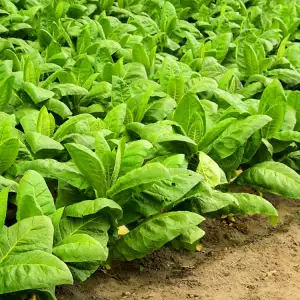
Tobacco has a very complex chemical composition, it is also a product whose qualities depend on the controversial combination of different substances in it. The most common chemical constituents in tobacco can be divided into two groups. The first is group A, which includes substances that affect the quality positively - nicotine, alcohol resin and some other types of resins, essential oils, paraffin and soluble carbohydrates. The second is a group in which there are substances that adversely affect quality - protein, ammonia, organic acids and free bases, methyl alcohol and nitrogenous substances without nicotine.
The content of nicotine in tobacco moves in a fairly wide range – between 0.5 to 14%. Besides nicotine, tobacco leaves contain some other alcaloids - anabazin, miozinin, nornicotine, oxyckotin. Especially important is nornicotine which is considered ten times less harmful than nicotine.
Carbohydrates that are found in tobacco leaves also vary very widely. That largely determines the taste of tobacco.
Total nitrogen content reaches 2.60% and nitrogen compounds are divided into two groups - disolvable /amides, amino acids, amines, alkaloids, nucleic acids/ and insolubles /proteins/.
The proteins in tobacco are between 5-6.5%, but it is believed that the content of more than 6% is completely unacceptable. Nitrogen fertilization of fields with tobacco increases the nitrogen content of substances, the necessary and the side.
Types of tobacco
The most common types of tobacco are:
Majorca - big leaves of tobacco of the Nicotiana Rustica type. They contain nicotine and many of them are made into snuff products;
Oriental tobacco - it is small-leaved, used mostly for the production of cigarettes;

Semi- Oriental tobacco - it's a little bigger than oriental. Used for the manufacture of cigarettes produced in Turkey, Serbia, the Middle East and Macedonia ;
Virginia flue cured - produced in the United States and Zimbabwe. It has big leaves, which are used to manufacture cigarettes;
Burley and Maryland - tobacco produced in the United States. Burley is suitable for both cigarettes and pipe;
Cigar tobacco – it has elastic but soft leaves. There are three main varieties, as intended. Filler - filler cigars; Binder - a wrapped up cigar; Rapars - a cover for cigars. Rapars are the most expensive. These types of tobacco are produced in the Philippines, Indonesia and Cuba.
Use of tobacco
From tobacco leaves, we can produce different tobacco products. The most common are naturally cigarettes, followed by cigars, chewing tobacco, snuff and pipe tobacco. From the stems, you will make some kinds of tobacco /Majorca/ characterized with its high nicotine preparations. Other alkaloids are betaine and anabazin and third - malic and citric acid.
Tobacco stems are very rich in potassium, then a special treatment is used to obtain fine paper. Tobacco seeds contain about 40% of fat, making them suitable for the production of high quality oils for technical purposes.
Dangers of Tobacco
The use of tobacco in various forms, especially cigarettes has many health dangers. Smoking is the biggest cause of lung cancer. It causes about 80-90% of all cancer deaths, lung, and about one third of cancers in developing countries, including cancers of the stomach, mouth, throat and vocal cords.
Nicotine causes an increase in blood pressure, quantization destroys vitamin C in the body. Smoking causes memory problems, decreasing the rate of information saving. It is associated increased risk for not only cancer, but heart disease. It is important to note that passive smokers are also at serious risk.
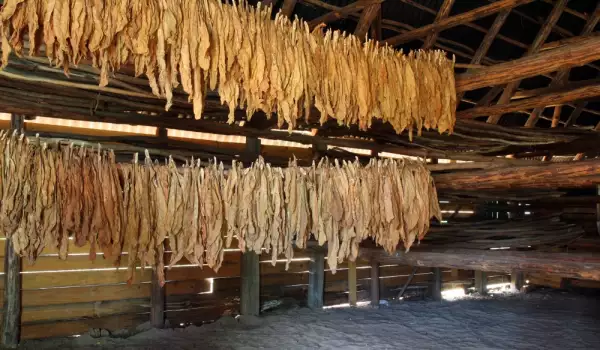

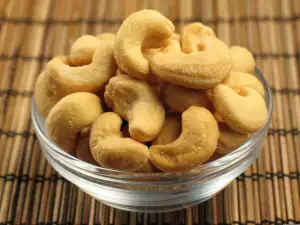
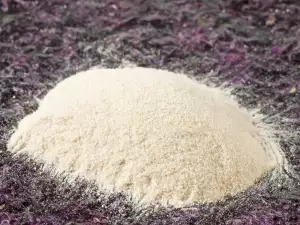
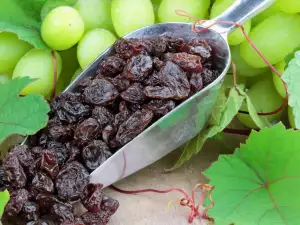

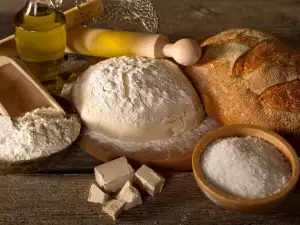
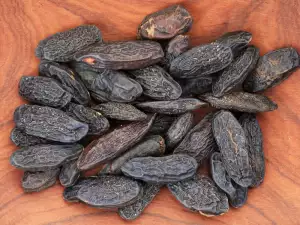


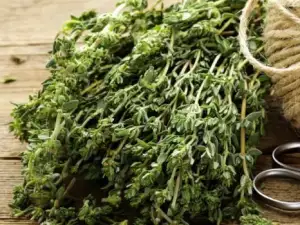
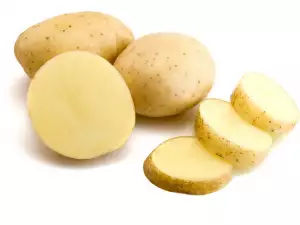



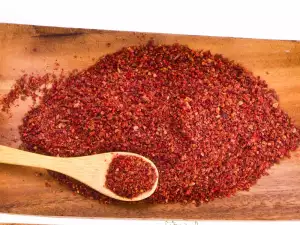
Comments